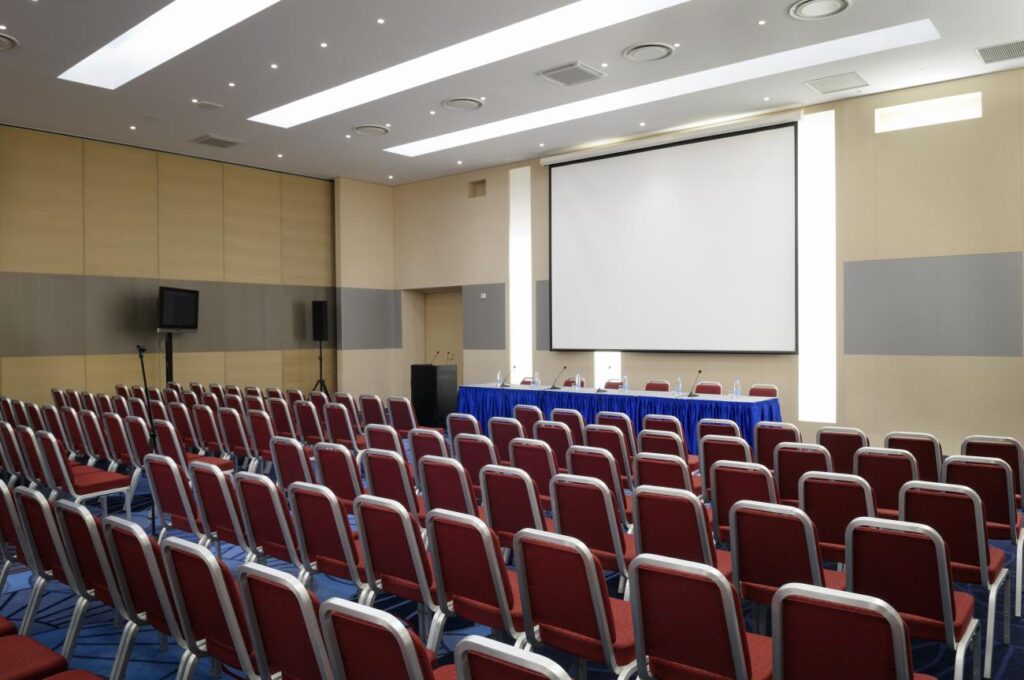Be sure your next warehouse paging system is powerful and efficient with these pro tips for equipment and installation.
A warehouse paging system can be a powerful tool for improving efficiency and productivity. Even in noisy factory environments, a PA system can allow you to easily broadcast a message to all workers, or ask a single worker to reply via an intercom or call box near their current location, or with a handheld radio.
One of the biggest benefits of a wireless warehouse PA system is that no messy cables are needed, which can get damaged and even be hazardous in a warehouse environment with lots of traffic.
In this article, we’ll run through 5 tips to help you choose the right paging system for warehouse use that meets your needs.
1. Consider the square footage, shape, ceiling height, and noise level of the warehouse

Naturally, the larger your warehouse space, the more speakers or horns you will need to make sure all staff can hear broadcasts easily. While you might already know the square footage of your warehouse, calculating the cubic footage is vital when sound waves are involved.
If your ceilings are particularly high, this will affect what types of horns can be used and where they should be placed. You should also have a good idea of the typical noise level in the environment in decibels.
2. Do you need a one way paging or talk back paging solution?
A one-way warehouse paging system is generally sufficient for smaller warehouses, when the solution will only be used to make general announcements, ask a worker to report to the office, alert staff to the arrival of a delivery or pickup vehicle, or for emergency or evacuation announcements.
In contrast, talk back systems allow individuals to respond to announcements through the paging speakers or via a talkback controller. This is ideal where real-time communication between office staff and warehouse staff is required – such as getting an instant update on inventory levels of a particular product for the sales department.
3. Could you benefit from connecting your phone to your PA system too?
Beyond talk back capability, another option is a paging system for warehouse use that also connects with your telephone system. With this functionality in place, your warehouse and technical staff suddenly becomes accessible to multiple branches, or reps traveling on the road.
These can also be coupled with VoIP technology, allowing seamless and serverless communication between customers, office employees, and warehouse staff.
4. What type of speakers do you need?
While high-powered horns are most commonly used in large, noisy factory environments, they’re not the only option. There are three main types of speaker to consider – ceiling speakers, wall baffles, and horns.
Ceiling speakers:
As the name suggests, these speakers are embedded in ceiling panels. They’re suitable for heights of up to 20 feet, and should be spaced 2x the ceiling height apart. So if your ceiling height is 10 feet, for example, speakers should be placed 20 feet apart. A good option for small warehouses and storage areas.
Wall baffles:
Instead of radiating sound downwards as with a ceiling speaker, wall baffles send soundwaves horizontally. Because of this, it’s important never to place them directly opposite one another.
Wall baffle speakers are a good option for smaller and medium warehouses which have a ceiling height over 20 feet, but aren’t large enough to warrant horns.
Horns:
Finally, the most powerful warehouse speakers are horns. They can be used indoors, including in noisy environments, as well as outdoors. These are also the types most commonly used by airports and at large shopping centers. Depending on the power of the horn, they can be spaced 50 feet apart and upwards, and are usually mounted 20 feet above the ground or higher.
5. Self-amplified or central-amplified?
Finally, you’ll need to decide between a 70-volt central-amplified, or a 24-volt self-amplified paging system. Here’s a quick synopsis of the two options:
70-volt central-amplified for larger warehouses:
- One receiver which amplifies the signal to a number of speakers connected to the same wire. (i.e. one power supply)
- Suitable for music and other audio, rather than just voice.
- Can easily interface with additional peripherals like microphones.
- Cannot be used near phone lines, as the stronger signal can cause interference.
- More expensive, but easier to scale.
24-volt self-amplified for smaller warehouses:
- Each speaker has its own power supply, which means more cabling.
- Only suitable for voice communication.
- No interference with phone lines.
- More affordable, but can only be used with up to six speakers or four horns.
If you need the best of both, Systcom can design a dynamic system for you that works in tandem. Contact us today.


